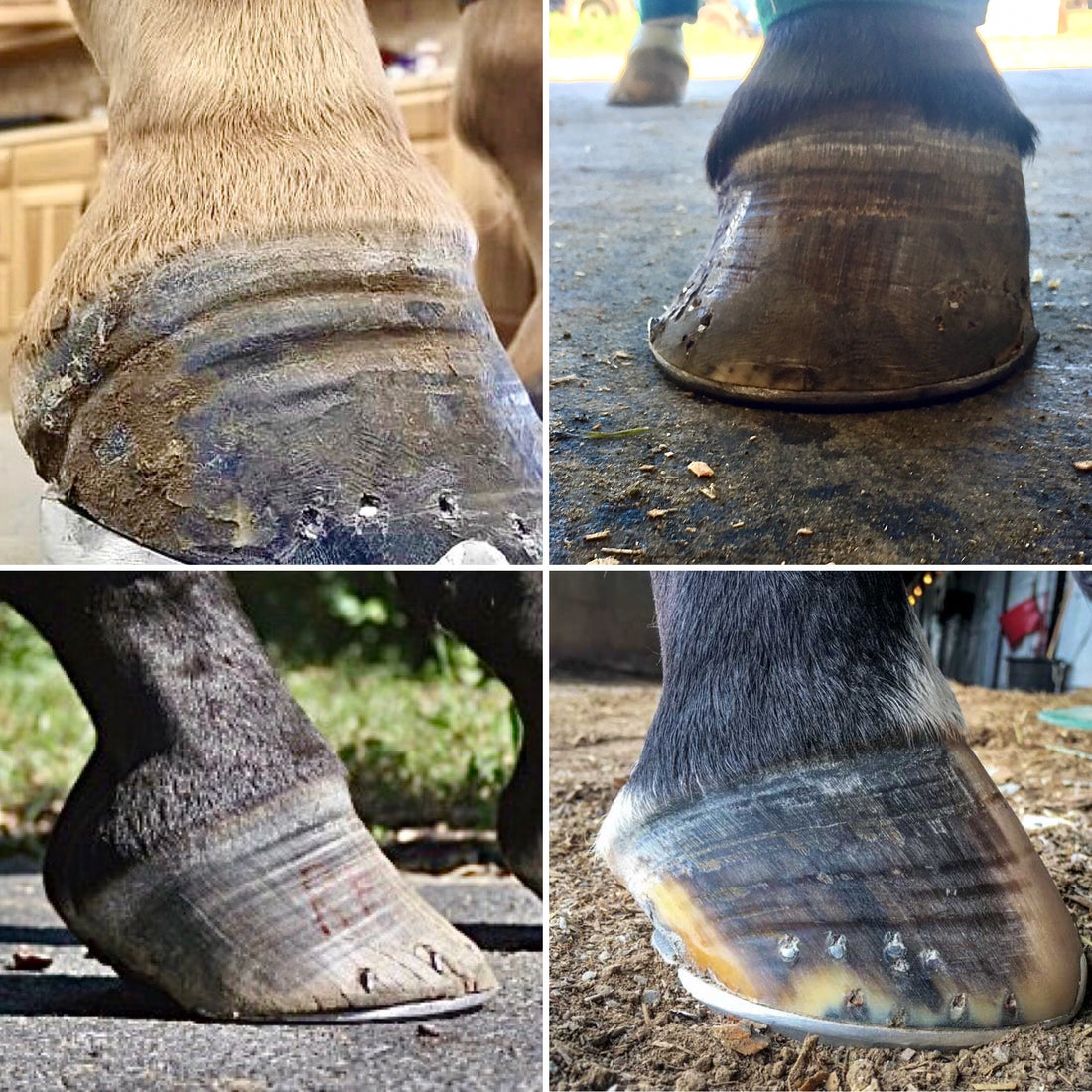
Hoof Conditions: Is the Hoofwall the Culprit? (continued)
Share
I would like to go a bit further into my theory regarding my defense of the hoofwall blog post, “Is The Hoofwall the Culprit?”.
I’d like to share another of my favorite sayings and that is “what you see on the outside mirrors the inside”. What I mean by that is the “event rings”, the dishes, the flares, etc. don’t just magically appear on horse’s feet; they are the result of the inflammation inside the hoof capsule and the effects the inflammation has on the hoofwall. As you can imagine, with the inflammation comes a great deal of pain and in response to the pain, the horses try to compensate. If, for instance, there is a bruise on the inside of the horse’s foot, they try to land on the outside of their foot to avoid the pain and, over time, the hoofwall will begin to flare on the outside from the horse putting additional pressure there (to avoid the painful inside).
Imagine if you had a pebble in the heel of your shoe, you would try to walk on the front of your foot to avoid the pain, right? Horses who are experiencing heel pain also try to avoid landing properly on their heels and, over time, you will see the front of their feet (where they are landing – improperly) will expand both to the front and sides and their heels will contract. Their feet start looking something like a swim flipper instead of a hoof – and that is not a good thing.
Relative to the size of a horse, their foot is nothing more than a very small pod supporting an enormous amount of weight for its size. All of the components of the hoof do a miraculous job protecting the delicate parts enclosed inside the hoof capsule; to function properly, they must maintain their integrity. When a foot is allowed to flare, contract or spread, the hoof function is undeniable compromised and ultimately the horse, as a whole, will suffer.
Let me just give you a little exercise to try yourself: try walking on the front part of your foot only (as if your heel is hurt) and see what happens? How is your gait? Your stride? And how do your entire walking biomechanics function? The same thing happens if you try the same exercise walking on one side of your foot – so, do you see where I’m going here?
The crack is the end stage of the damage – it’s the last thing that occurs; it’s Mother Nature’s way of giving some relief from the swelling inside the hoof capsule.
So, while it’s true that we can’t actually see inside the hoofwall, we can see changes in the hoofwall and we must be vigilant about monitoring our horses hoof health and preventing issues from occurring.